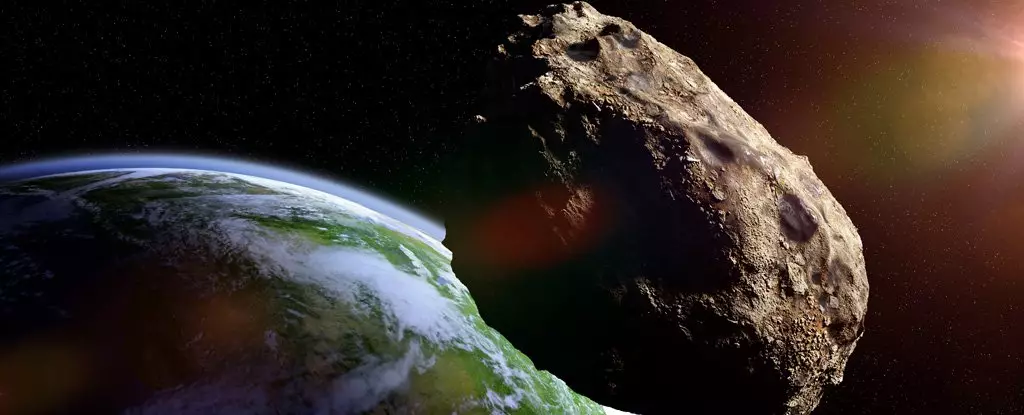Asteroid 2024 YR4 has drawn the attention of the international cosmic community, as it races through our solar system with a concerning 1 in 83 chance of colliding with Earth by December 22, 2032. Discovered by the Asteroid Terrestrial-impact Last Alert System (ATLAS) in late December 2024 from a facility in Río Hurtado, Chile, this celestial body is now under active surveillance. The International Asteroid Warning Network (IAWN) has classified it as a potential threat, compelling organizations worldwide to initiate preventive measures.
IAWN officials emphasize that while the odds are considerable, the most probable scenario is that 2024 YR4 will pass by Earth harmlessly. This reflects a remarkable sentiment among astronomers, who underscore the importance of maintaining vigilance without inciting panic. David Rankin, an engineer with Catalina Sky Survey, noted on Bluesky that events like these require a cautious approach, as the scale of the asteroid’s potential impact is indeed substantial.
The dimensions of Asteroid 2024 YR4, estimated to range from 40 to 100 meters in diameter, prompt serious considerations regarding potential impact consequences. Although it is not classified as a world-ending event, an asteroid of this size could unleash catastrophic effects within a 50-kilometer radius upon impact, depending on where it lands. Current projections have identified regions—including the eastern Pacific, northern South America, Africa, and South Asia—as possible impact zones, raising awareness and concern among global populations.
Lastly, while the asteroid’s current risk rating is a 3 on the Torino Scale, which indicates a modicum of concern and attention, this is far from presenting a global crisis. Comparatively, the infamous asteroid 99942 Apophis, which faced similar scrutiny, registered a higher risk rating before its probability of collision was deemed negligible. Continuous monitoring and data collection will be paramount in refining assessments of 2024 YR4’s trajectory.
International collaborations play a critical role in monitoring threats from asteroids. Agencies including NASA, the European Space Agency, and various astrological universities are engaged in ongoing observations and characterizations of 2024 YR4. Colin Snodgrass, an astronomer from the University of Edinburgh, advocates for further observations to clarify the asteroid’s path. “If these observations don’t rule out an impact,” he explained, “the next steps would involve more refined measurements and discussions about reconnaissance and potential mitigation strategies.”
As teams continue to accumulate data, they will aim to narrow down the asteroid’s trajectory. Initially, the wider risk corridor increases the likelihood of overlap with Earth. Relying on cumulative observations, space agencies can finally determine whether an asteroid is actually on course for an eventual impact or if its trajectory leads it safely away from our planet. For 2024 YR4, this process will require considerable effort, as the asteroid possesses an eccentric orbital path that complicates trajectory predictions.
Preparedness and Mitigation Strategies: What Lies Ahead?
With uncertainties still birthed from early observations, potential strategies are under discussion should the risk of a collision persist. The Space Mission Planning Advisory Group is set to convene in Vienna to address these findings and provide further recommendations—not just for scientific communities but for global entities such as the United Nations. One of the viable prospects could involve deflection missions, similar to NASA’s Double Asteroid Redirection Test (DART) mission, which successfully tested our ability to redirect an asteroid’s path.
The conversations surrounding asteroid 2024 YR4 serve as a poignant reminder of humanity’s vulnerability to cosmic phenomena. Although the data points to an unlikely impact, the implications necessitate a holistic and well-coordinated approach to planetary defense. Innovative solutions, collaborative efforts among nations, and ongoing technological developments will be paramount as we prepare for uncertainties posed by the cosmos.
While the threat from Asteroid 2024 YR4 remains uncertain, our response will dictate how effectively we can mitigate risks posed by potential cosmic collisions. Vigilance, preparedness, and international cooperation will be our guiding stars as we navigate the enigmas of near-Earth objects. The journey of understanding and addressing these celestial threats is just beginning, and it will require resolute commitment and innovation from the entire global community.


Leave a Reply